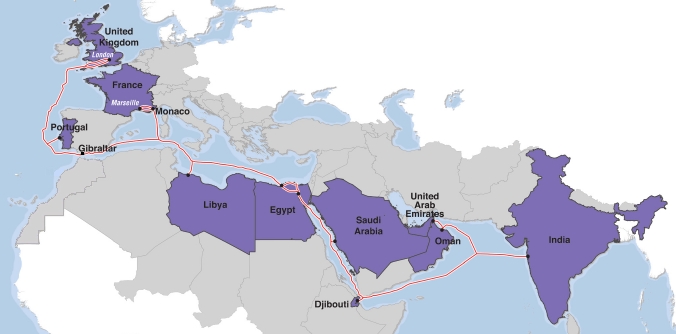EIG cable in action!
And here we get latest EIG cable i.e Euro India Gateway cable in action. Although cable was up few months back, but it’s now we are getting some changes in routing table up. (Probably earlier was test mode?).
Here’s a map of EIG cable.

This was very interesting project because of few reasons - firstly it is one (of few) cable consortium’s where India’s biggest State owned telco BSNL (also known as NIB - National Internet Backbone). Apart from that, it is one of direct link between India and UK. Earlier main route was from Mumbai to France (VSNL-Tata route) and next domestic Europeon bones Lamdanet, Telia, Level3 etc used to carry data further.
